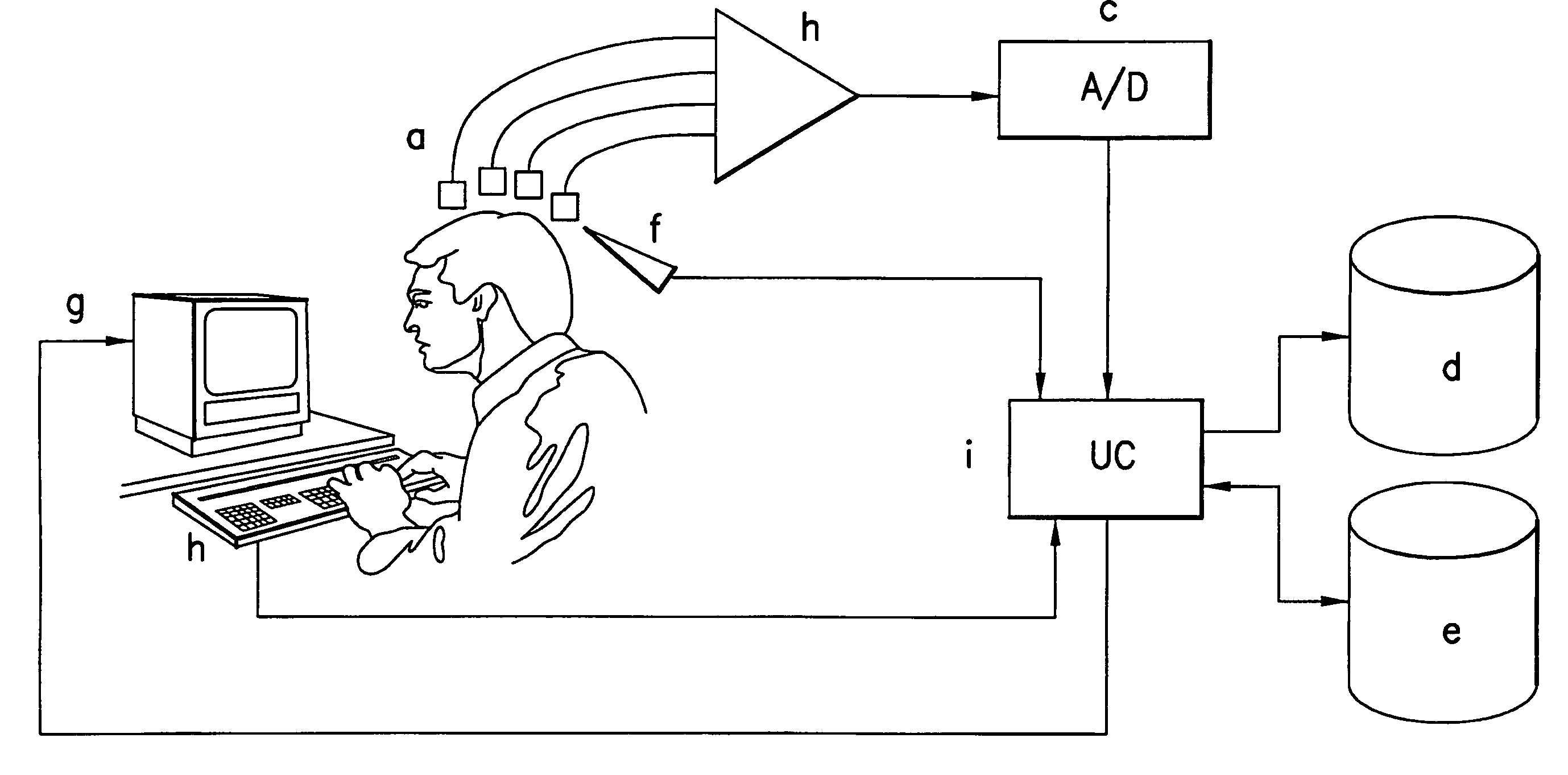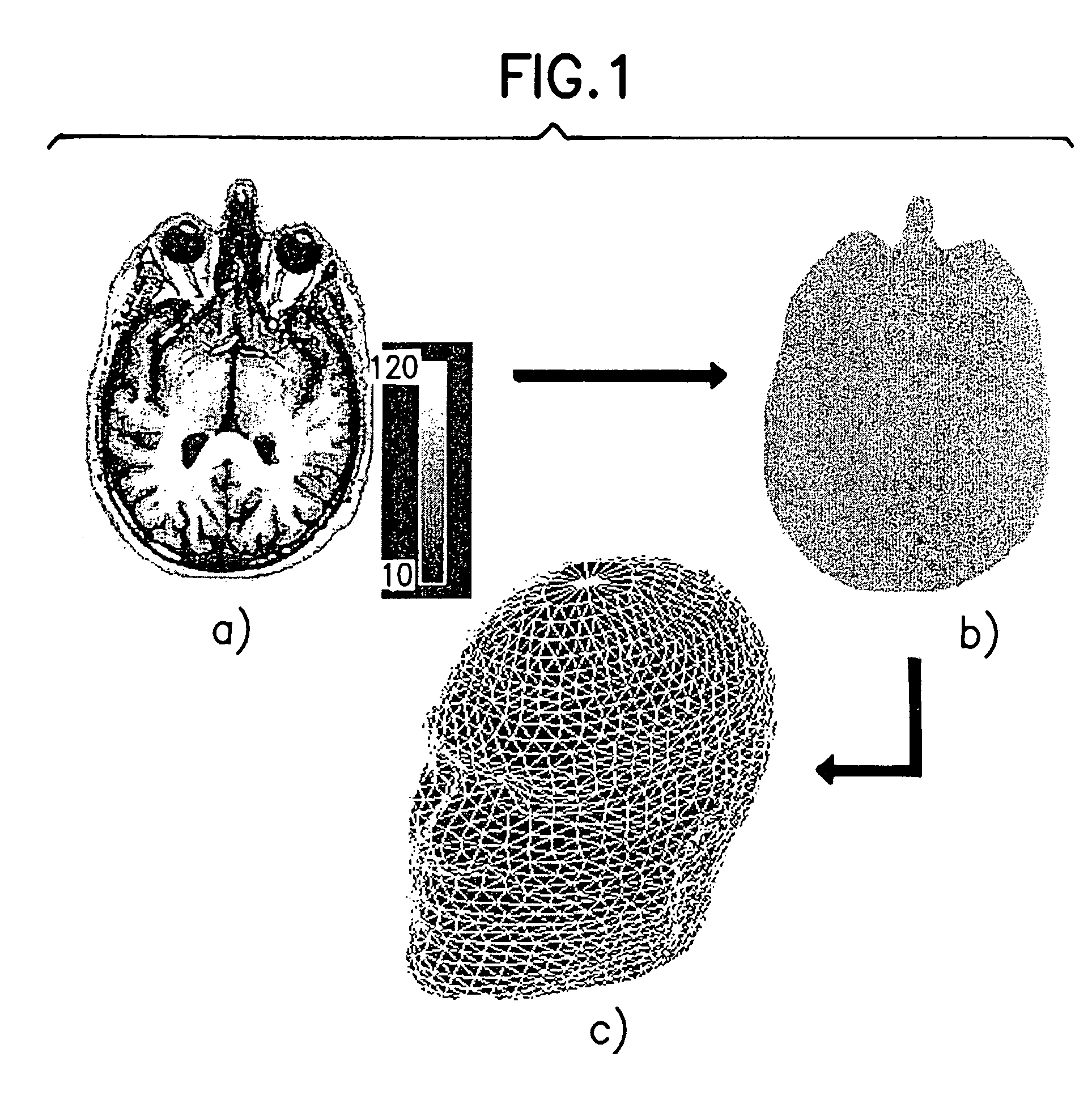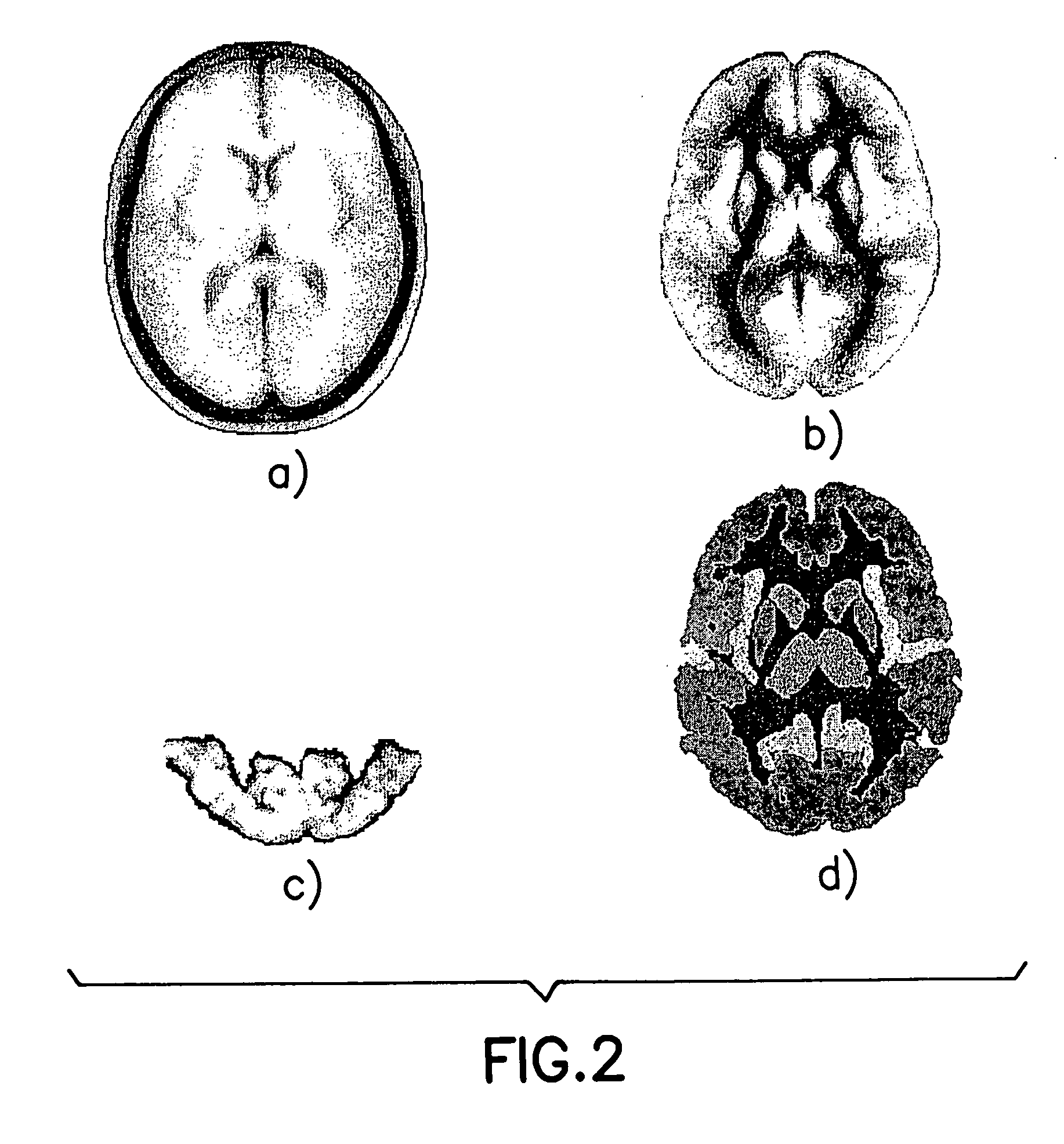However, these methods have the following limitations:
This implies that the decision frontiers between the groups are linear which is too restrictive.
In addition, optimal procedures for the selection of the DPs with highest classification power have not been applied.
Therefore, none of these methods constitutes a modality of TPEC.
However, it is well-known that the
conductivity in the body is non homogeneous and non isotropic (Hoeltzell P. B. and Dykes R. W.
Conductivity in the somatosensory cortex of the cat.
61–82, 1979), a fact that complicates the calculation of the LFs considerably.
(1) When the number of possible generators of PEC (Ng) becomes too large, this type of model requires of an excessive manual intervention of the operator. For this case, the inverse problem becomes again ill determined. In fact, these models do not include a statistical approach for determining Ng.
(2) When the different regions of tissue that generate PEC are distributed in extensive areas, the dipolar model estimates an equivalent
dipole located at the
center of mass of the actual region, and therefore produces an artifact
(3) The smoothness of αg(t) has been imposed by use of a spline basis, that limits its possible forms of the amplitude of the activity to belong to a Sobolev
functional Space W2(L2), (second derivative integrable Lebesgue).
However, the LF methodology has not been used, which necessitates the use of numerical algorithms for the realistic case that are not very practical since they require the evaluation of a step of the BEM in each iteration.
(1) The statistical procedures described in the U.S. Pat. No. 5,282,474 were not extended for use in the TPEC. In particular, the
sample space of the TPEC is a
stochastic field defined on a 4 dimensions space time manifold, thus requiring for its analysis specific methods which were not taken into consideration in said patent.
(2) The regression methods used in the U.S. Pat. No. 5,282,474 to eliminate the effect of experimental concomitant variables are of a parametric global polynomial type. These are not sufficiently flexible for the description of the variations at multiple scales typical for electrophysiologicalal data.
(3) In the case of the Valdés-Sosa et al. '807 patent, the only regularization resource consists of the control of the number of dipoles whose parameters are considered. This is an implicit use of the functional RJ(j(t)|Θ) that guarantees that Ngo, which is not very flexible and requires excessive human intervention.
(4) The solution for the direct problem that relates the activity of the generators with the
observable signals is achieved with anatomical
deconvolution. This method does not adapt to general configurations of generators and is only an inexact numeric approximation to the optimal solution.
(5) The parametric description employed to characterize the geometry of the subject's body is based on the use of quantitative descriptors of a functional form that are not sufficiently flexible to adequately describe inter-individual morphometric variability. In particular this method does not allow the inclusion of probabilistic anatomical information in those cases for which the acquisition of structural images of the particular subject under study is either undesirable or impracticable.
(6) The metabolic information available from other image modalities is only integrated as a restriction to the regions in which active dipoles will be allowed. Thus this information is not used in a statistically
optimal estimation procedure.
In particular Linear Distributed Solutions are limited to estimate j(t) for each time t separately.
This method produces spatially widespread estimates that do not localize discrete sources correctly.
It has been demonstrated that this method avoids spurious superficial solutions but it does not localize discrete sources with more precision.
All these Spline methods specify the membership of j(t) to a Sobolev Space Hq(L2), for integer q, which is too restrictive since the
estimation of dipolar types of PEC are not allowed.
This limit is the cause, additionally, of the appearance of “ghost” solutions that are interference artifacts due to the limited resolution of
linear methods.
In consequence, they share with these dipolar models the defect that they can not estimate spatially distributed sources.
None of the methods described above models the temporal dependencies of j(t), which is equal to the use of the implicit assumption that j(t) is independent for each t. This assumption can cause considerable bias in the statistical estimates.
 Login to View More
Login to View More  Login to View More
Login to View More 


